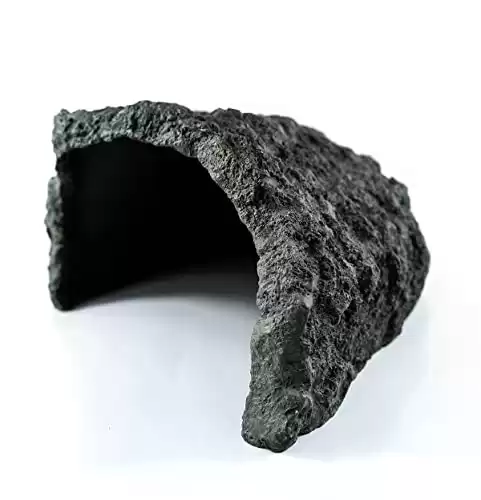When you think of getting a cute, cuddly pet, a snake is probably not the first animal to cross your mind. That’s not their persona at all. Pet snakes have a reputation for being emotionless. However, even if snakes have emotions, they cannot be as affectionate as regular pets like dogs and cats could. This is a cause for concern for anyone considering getting one as a sort of live-in companion. This often leads them to ask if snakes have emotions.
If having a pet that can show affection and you can bond with easily is vital to you, you’ll most likely have several questions about snakes and how they show emotions. This is a tricky question because animals show feelings differently from humans. Snakes already have a bad and fearsome reputation, making it difficult to tell how they feel. In this article, we will answer whether or not snakes have emotions and, if they do, how exactly you can tell how they’re feeling.
Do Snakes Have Emotions?
Yes, Snakes have emotions. Like most animals, they can feel things. However, how snakes feel and show emotions is different from that of humans. We know for sure that they can feel and show fear and aggression when they’re disturbed. They may also show contentment and familiarity. They’ll show satisfaction in the presence of their owners or when in a comfortable environment, and they can act skittish around strangers.
However, the jury is out on whether or not they can feel affection towards their owners or not. They are likely to become more tolerant of their owners, but it’s difficult to determine whether or not they can show affection or recognize them.
Snakes and other reptiles are not social animals. They do not form communities, have friends, or even nurture their own young. Unlike mammals that can demonstrate complete emotions like love, joy, or even jealousy, snakes do not demonstrate deep feelings like these. So even though they have emotions, their feelings are a bit primitive.
How Can You Tell How A Snake Feels
Animals like birds and mammals have facial muscles and an eyelid, which help them communicate how they feel at any given moment. Snakes don’t have these features, so they cannot form expressions. Their body language is also difficult to read. So how exactly can you tell how a snake feels?
The truth is, reading a pet snake’s emotions is difficult. However, some indicators can help you decipher their feelings, especially regarding the rudimentary emotions they show.
When a snake feels uncomfortable or threatened, it is likely to act aggressively. It typically warns you by hissing. Aggression is one of the most straightforward emotions to decipher when it comes to snakes. They’ll coil and hiss aggressively if they feel unsafe.
Bear in mind that each snake species tends to exhibit different personalities. Some are naturally more nervous and timid than others. Also, while some pet snakes are active, others are more docile.
It’s not very difficult to see when your snake is nervous or calm. If you learn to read their body language, you’ll know their natural temperament and easily tell when they’re acting out of their normal element.
It’s also possible to tell when your pet snake is happy and comfortable. Most times, it curls up and rests. A completely coiled-up snake feels secure and satisfied. The snake may also appear alert and interested in its environment instead of trying to get away or hide under things.
- Made from tempered glass
- Features a top screen made from thin wire
- Two front doors for easy access
- Easy to install
However, it’s difficult to tell when it comes to more complex feelings like love and joy. Experts seem to think that snakes don’t feel these emotions mainly because it doesn’t benefit them.
A pet snake will most likely not feel your absence since they can survive for months without you giving them food and water. They’re also able to find their own food and they don’t really need a snake shelter. Experts believe that this tendency to be more independent than other pets is why snakes didn’t evolve to show affection or get attached. Still, there are some indications that snakes may show love in subtle ways.
How Do Snakes Show Affection?
Some experts believe that snakes can show affection. However, they often do this in subtle ways, and some snakes may not show it at all because they’re not attached to their human owners.
One common way snakes show affection is by rubbing their head against the object they’re trying to be affectionate towards. This display is known as head-bobbing. They may also do similar things like necking or wrapping themselves around the object in an affectionate way.
Some snakes have been known to sneak behind their owners and wrap their bodies around their legs. They may also show that they’re comfortable around you by forming a loop around your neck or resting on your shoulders. When they do this, it’s safe to take it as an invitation to pet their body or head.
Some snake actions are more difficult to decipher. For instance, while a “hissing” sound is commonly associated with aggression, this is not always the case. The meaning, in most cases, depends on the personality of the snake.
Also, in most pets, trying to cuddle is often interpreted as a show of affection. But this isn’t always true with a pet snake. If your pet snake seems to be more cuddly than usual, there’s a good chance that the temperature in the room is too low, and it’s simply trying to use you for body heat and nothing else.
Some snake owners also believe that their pets can recognize them because they respond to their presence in specific ways. However, there is no substantial evidence to support this. At best, your snake has simply learned to associate your presence with something positive such as food.
Since snakes rely mainly on their sense of smell, the scent of the food you’re carrying with you may cause them to respond positively anytime you’re around. But this does not mean they recognize you as their owner in the real sense. The part of the brain responsible for memory, the frontal lobe, is missing in the snake. This gives them a limited capacity to remember and makes the probability of recognizing their owners difficult.
Snakes are socially shallow animals, and it’s difficult to predict their feelings to a high degree of accuracy. Their behavior, needs, and biological process are different from most other pets, making it difficult to describe the full spectrum of their feelings. Their main concerns revolve around finding food and a comfortable place to hide, and they don’t really care about affections. However, their ability to show affection does not mean they’re undesirable as pets.
What Do Snakes Like To Do For Fun?

Creating an interesting habitat for your pet snake can help it thrive.
©David Huntley Creative/Shutterstock.com
It’s important to make sure that your pet snake is content in the environment you’ve created for it. Besides human interaction, there are other things a snake enjoys.
For one, when you clean its enclosure, you can rearrange its habitat, or add new decor to give your snake something new to explore and enjoy. Items that snakes prefer include log decor, driftwood, cork rounds, rock caves, and live or fake plants.
Your snake also may be stimulated by a variety of textures, from pellets to bark to mulch. A particular substrate may motivate it to burrow or bury things. You can also create a game at meal times by rubbing its lunch in different places, creating a scent path it can follow to try and locate the hidden meal. Anything you can do to stimulate your snake will hopefully help it to thrive.
Conclusion
In conclusion, it’s safe to say that snakes show certain behaviors that humans can interpret as emotions and feelings. However, we must know that they experience emotions differently and are incapable of feeling certain emotions. The most recognizable emotions they exhibit include fear and aggression. Of course, you need to be able to watch their behavior and study their countenance to ensure they’re comfortable at all times. It’s great to want to feel an emotional connection with your pet. However, your feelings will most likely be one-sided with a pet snake.
The photo featured at the top of this post is © Sergey Novikov/Shutterstock.com
Discover the "Monster" Snake 5X Bigger than an Anaconda
Every day A-Z Animals sends out some of the most incredible facts in the world from our free newsletter. Want to discover the 10 most beautiful snakes in the world, a "snake island" where you're never more than 3 feet from danger, or a "monster" snake 5X larger than an anaconda? Then sign up right now and you'll start receiving our daily newsletter absolutely free.
Thank you for reading! Have some feedback for us? Contact the AZ Animals editorial team.








